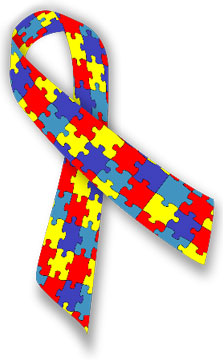 Children with autism may be faced with multiple challenges including problems with socialization, behavior, and learning. A common problem among children with autism is an inability to achieve restful sleep. Sleep problems are prevalent in the autistic population and can be a common complaint voiced by parents.
Children with autism may be faced with multiple challenges including problems with socialization, behavior, and learning. A common problem among children with autism is an inability to achieve restful sleep. Sleep problems are prevalent in the autistic population and can be a common complaint voiced by parents.
We know that sleep deprivation has a detrimental effect on children and their families. Problems sleeping have been linked to behavior problems in children as well as symptoms of attention -deficit/hyperactivity (ADHD). Poor sleep makes it difficult to concentrate in school and to perform executive functioning activities such as the ability to organize and plan. When children are not well-rested, they can have increased problems with other chronic conditions such as epilepsy, asthma, and diabetes. In addition, poor sleep has been associated with an increased risk of obesity.
Sleep problems in children can include a variety of problems with breathing, movement of arms and legs, inability to fall asleep and stay asleep, and sleep-related behaviors such as sleep walking, sleep talking, and teeth grinding. A difficult night of sleep makes it difficult for a child to achieve their maximum potential the next day. Sleep problems in children with autism may be especially severe and may require the help of a team of specialists dedicated to helping the child, and family, sleep better.
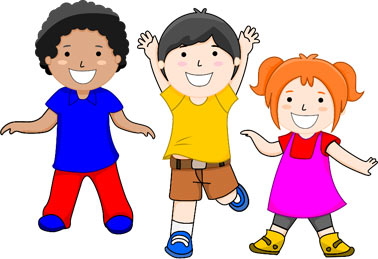 Approximately 70% of children with autism have problems sleeping. Outside factors in the world of the child with autism that may influence his or her inability to sleep include sensory sensitivities and disruptions in routine. Internal factors may include anxiety, an inability to settle down for the night, difficulty reading social cues, and an inability to regulate emotions. Physical factors in children with autism that may interfere with sleep include differences in the production and regulation of sleep hormones and sleep neurotransmitters (chemical messengers that help to transmit signals in the brain).
Approximately 70% of children with autism have problems sleeping. Outside factors in the world of the child with autism that may influence his or her inability to sleep include sensory sensitivities and disruptions in routine. Internal factors may include anxiety, an inability to settle down for the night, difficulty reading social cues, and an inability to regulate emotions. Physical factors in children with autism that may interfere with sleep include differences in the production and regulation of sleep hormones and sleep neurotransmitters (chemical messengers that help to transmit signals in the brain).
- Are sleep problems common in children with autism? Yes
- Is it OK for children to have poor sleep because they have autism? No
- Is there anything that can be done to help children with autism to sleep better? Yes
The first step to getting children with autism to sleep better is to ask the question, “How is the child with autism sleeping?” Do they have difficulty falling asleep, staying asleep, or both? Are there symptoms of potential physical problems including snoring, pauses in breathing during sleep, restless sleep, sleeping in unusual positions, or kicking legs in sleep? If there is the potential for a physical problem related to sleep, the child should be evaluated by their primary care provider or a sleep specialist with consideration toward obtaining a sleep study.
Children with autism are children first. They have some of the same problems as unaffected children. Attention should be given to obtaining control of any underlying chronic conditions such as asthma, GE reflux, and diabetes. While sleep problems can make chronic conditions worse, chronic conditions can also make it difficult for the child to sleep well.
Sensory issues can affect the ability of the child with autism to settle down for the night. Bright lights, noises, textures of bed clothes and linens can all make it difficult for children to relax. Children with autism are often crave routine and have difficulty making transitions. The bedtime routine is critical. All sleep training strategies stress routine, routine, routine, and consistency, consistency, consistency. The bedtime routine should start approximately 1-2 hours before bed and proceed as close to the same way each night. This also helps the child learn the social cues associated with getting ready for bed: decreasing household activity, dimming house lights, taking a bath, brushing teeth, etc. If things are done in the same order, at the same time every night, the child will more likely realize that bed time is soon to follow.
 Many children with autism use tablets, computers, and other electronic devices to self-soothe. Children may use these devices for multiple hours during the day and into the night. The use of electronics during the evening and night hours can interfere with sleep in a number of ways. First of all, if they are being used at night, the child is not giving their body the opportunity to go to sleep. Second, the light from electronic devices has been shown to interfere with the release of sleep hormones in the brain such as melatonin. Eliminating or limiting electronic devices in the evening and night for children with autism can be challenging. If decreasing screen time is an impossibility, efforts can be made to dim the screen light or the child can be encouraged to use special glasses that block blue light – the type of light that can interfere with sleep.
Many children with autism use tablets, computers, and other electronic devices to self-soothe. Children may use these devices for multiple hours during the day and into the night. The use of electronics during the evening and night hours can interfere with sleep in a number of ways. First of all, if they are being used at night, the child is not giving their body the opportunity to go to sleep. Second, the light from electronic devices has been shown to interfere with the release of sleep hormones in the brain such as melatonin. Eliminating or limiting electronic devices in the evening and night for children with autism can be challenging. If decreasing screen time is an impossibility, efforts can be made to dim the screen light or the child can be encouraged to use special glasses that block blue light – the type of light that can interfere with sleep.
Children who are restless at night may benefit from weighted blankets or Lycra sheets to help them to settle down at night. If there are no sensitivities, white noise such as a fan or looping music may be helpful. Children without sensitivities to touch may benefit from a light massage or vibration to help them to settle down before bed.
Finally, there is the question about whether children with autism should be medicated for sleep. Medication should always be considered carefully, and should be only considered after examination of sleep hygiene and sleep training practices. In some instances, children with anxiety and hyperactivity that cannot be otherwise controlled may benefit from medication to help them to settle down for the night. In addition, differences in the production of sleep hormones and neurotransmitters in children with autism may require the need for sleep medications to help to address those conditions. Parents should discuss the need for sleep medications with their child’s medical provider.
Sleeping problems in children with autism can be due to multiple factors. However, it is not appropriate to assume that just because a child has autism that they should be unable to sleep. There are treatment methods that can be used to help children with autism to achieve restful, restorative sleep. Sleep should be an achievable goal for all children with autism and their families.



 A sleep study, also known as a polysomnogram, is a test that evaluates the patient’s breathing, heartbeat, leg and arm movements, oxygen levels and brainwaves while they sleep.
A sleep study, also known as a polysomnogram, is a test that evaluates the patient’s breathing, heartbeat, leg and arm movements, oxygen levels and brainwaves while they sleep. The holidays are here! Some of us are still scrambling to find the perfect gift for that one person who seems to have everything. How about giving them the gift of a restful, restorative night’s sleep?
The holidays are here! Some of us are still scrambling to find the perfect gift for that one person who seems to have everything. How about giving them the gift of a restful, restorative night’s sleep?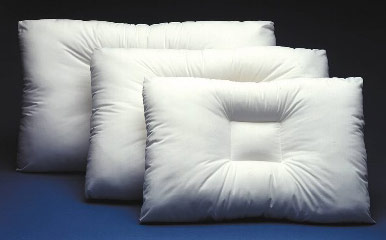
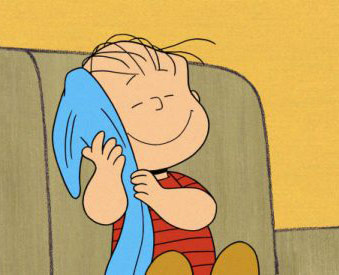


 It sounds simple enough – just lay down, relax, and go to sleep. Unfortunately, getting to sleep is anything but simple for a lot of people – including children. Sometimes it can be difficult to turn off the brain and tune out or to wind down little busy bodies. Sometimes medicines are indicated to help people to fall asleep. But sometimes performing some simple acts that relax the body and calm the mind are enough to ease children into soothing slumber.
It sounds simple enough – just lay down, relax, and go to sleep. Unfortunately, getting to sleep is anything but simple for a lot of people – including children. Sometimes it can be difficult to turn off the brain and tune out or to wind down little busy bodies. Sometimes medicines are indicated to help people to fall asleep. But sometimes performing some simple acts that relax the body and calm the mind are enough to ease children into soothing slumber.
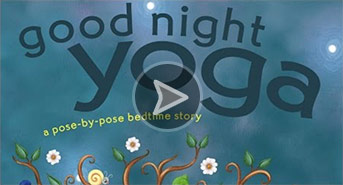
 It’s time for a new school year! Parents everywhere are gathering school supplies and buying new clothes, shoes, and back packs. Children are getting their well-child check-ups and vaccinations. Part of school preparation should be an evaluation of every child’s sleep.
It’s time for a new school year! Parents everywhere are gathering school supplies and buying new clothes, shoes, and back packs. Children are getting their well-child check-ups and vaccinations. Part of school preparation should be an evaluation of every child’s sleep.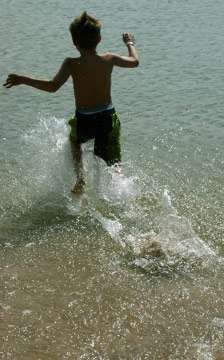 I have a lot of patients that come through my practice who are on wonderful sleep schedules during the school year. Their parents and I worked really hard to make sure that there was a good sleep routine in place and that they were practicing excellent sleep hygiene practices. Their children’s sleep had improved dramatically and everybody was happy. That is, until school ended for the summer.
I have a lot of patients that come through my practice who are on wonderful sleep schedules during the school year. Their parents and I worked really hard to make sure that there was a good sleep routine in place and that they were practicing excellent sleep hygiene practices. Their children’s sleep had improved dramatically and everybody was happy. That is, until school ended for the summer.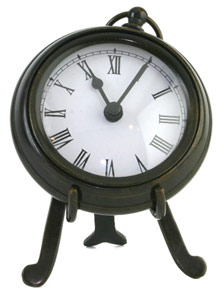 Routine, Routine, Routine
Routine, Routine, Routine Trips Out of Town
Trips Out of Town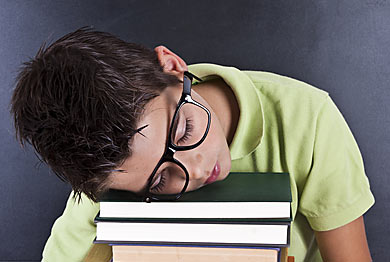 We all know how challenging it can be to make sure that our children have adequate sleep. Children have busy lives and quiet evenings at home are compromised by after school activities and homework. In addition, many children have poor sleep habits that contribute to their inability to fall asleep within a reasonable time and to stay asleep through the night.
We all know how challenging it can be to make sure that our children have adequate sleep. Children have busy lives and quiet evenings at home are compromised by after school activities and homework. In addition, many children have poor sleep habits that contribute to their inability to fall asleep within a reasonable time and to stay asleep through the night. Greetings Sound Sleepers! In my last blog post “THE FOOD FACTOR, HOW TO EAT FOR A GOOD NIGHT’S SLEEP” we discussed foods that contain Magnesium, a mineral known for it’s function in allowing the body to relax it’s muscles.
Greetings Sound Sleepers! In my last blog post “THE FOOD FACTOR, HOW TO EAT FOR A GOOD NIGHT’S SLEEP” we discussed foods that contain Magnesium, a mineral known for it’s function in allowing the body to relax it’s muscles. One ripe banana.
One ripe banana. Peel and slice or break up banana. Put in your Tablespoons of Greek Yogurt and mash and blend with a fork.
Peel and slice or break up banana. Put in your Tablespoons of Greek Yogurt and mash and blend with a fork.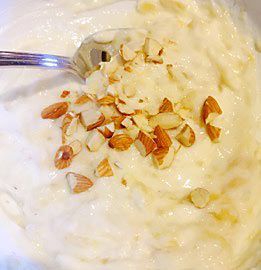 Sprinkle with crushed nuts and ENJOY! Isn’t it surprising how something so simple can taste so sweet? (This is also delicious frozen)
Sprinkle with crushed nuts and ENJOY! Isn’t it surprising how something so simple can taste so sweet? (This is also delicious frozen) Children with autism may be faced with multiple challenges including problems with socialization, behavior, and learning. A common problem among children with autism is an inability to achieve restful sleep. Sleep problems are prevalent in the autistic population and can be a common complaint voiced by parents.
Children with autism may be faced with multiple challenges including problems with socialization, behavior, and learning. A common problem among children with autism is an inability to achieve restful sleep. Sleep problems are prevalent in the autistic population and can be a common complaint voiced by parents. Approximately 70% of children with autism have problems sleeping. Outside factors in the world of the child with autism that may influence his or her inability to sleep include sensory sensitivities and disruptions in routine. Internal factors may include anxiety, an inability to settle down for the night, difficulty reading social cues, and an inability to regulate emotions. Physical factors in children with autism that may interfere with sleep include differences in the production and regulation of sleep hormones and sleep neurotransmitters (chemical messengers that help to transmit signals in the brain).
Approximately 70% of children with autism have problems sleeping. Outside factors in the world of the child with autism that may influence his or her inability to sleep include sensory sensitivities and disruptions in routine. Internal factors may include anxiety, an inability to settle down for the night, difficulty reading social cues, and an inability to regulate emotions. Physical factors in children with autism that may interfere with sleep include differences in the production and regulation of sleep hormones and sleep neurotransmitters (chemical messengers that help to transmit signals in the brain). Many children with autism use tablets, computers, and other electronic devices to self-soothe. Children may use these devices for multiple hours during the day and into the night. The use of electronics during the evening and night hours can interfere with sleep in a number of ways. First of all, if they are being used at night, the child is not giving their body the opportunity to go to sleep. Second, the light from electronic devices has been shown to interfere with the release of sleep hormones in the brain such as melatonin. Eliminating or limiting electronic devices in the evening and night for children with autism can be challenging. If decreasing screen time is an impossibility, efforts can be made to dim the screen light or the child can be encouraged to use special glasses that block blue light – the type of light that can interfere with sleep.
Many children with autism use tablets, computers, and other electronic devices to self-soothe. Children may use these devices for multiple hours during the day and into the night. The use of electronics during the evening and night hours can interfere with sleep in a number of ways. First of all, if they are being used at night, the child is not giving their body the opportunity to go to sleep. Second, the light from electronic devices has been shown to interfere with the release of sleep hormones in the brain such as melatonin. Eliminating or limiting electronic devices in the evening and night for children with autism can be challenging. If decreasing screen time is an impossibility, efforts can be made to dim the screen light or the child can be encouraged to use special glasses that block blue light – the type of light that can interfere with sleep.